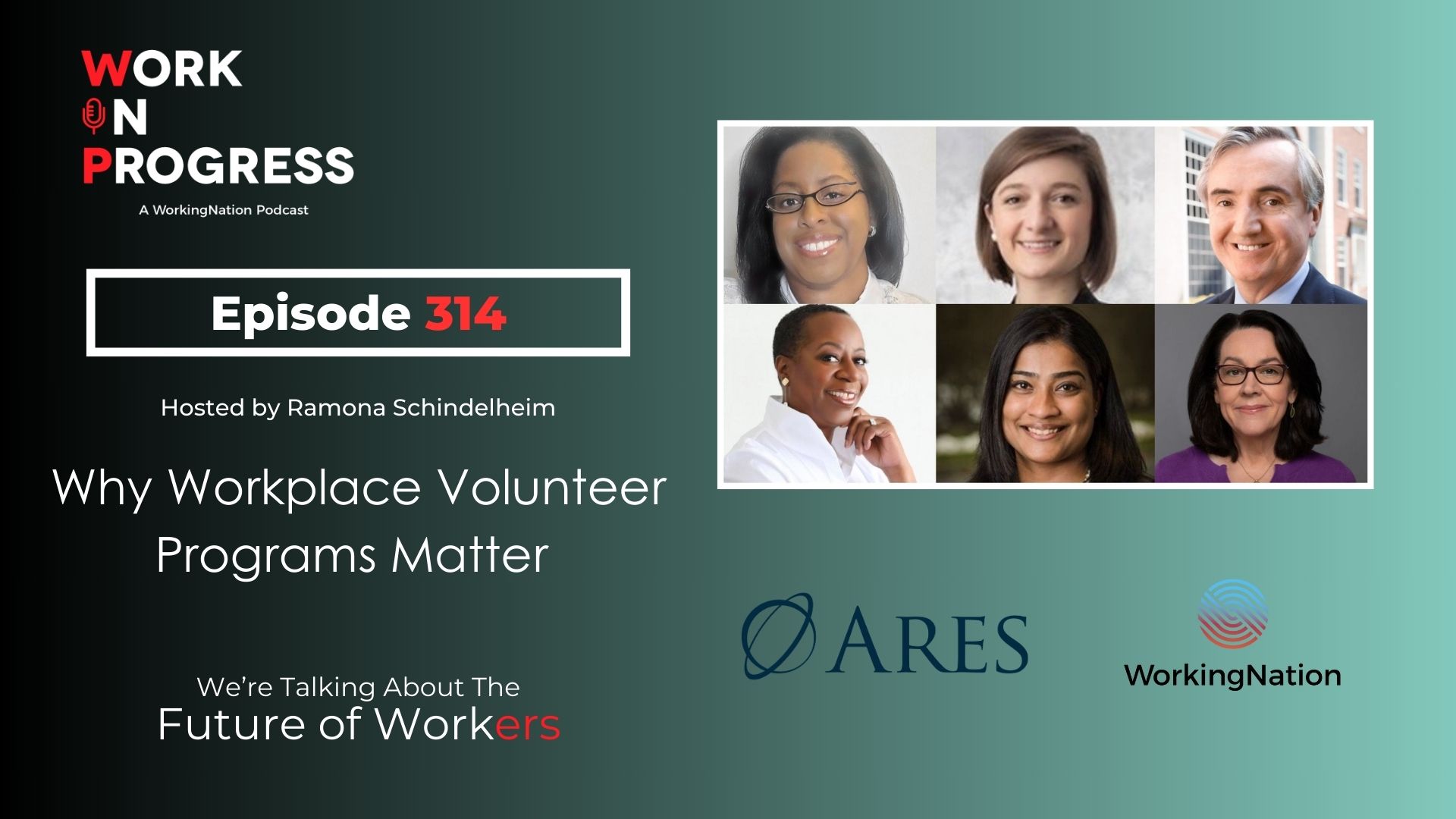The “Queen of the Internet” has spoken.
Each year at the annual Code Conference, Mary Meeker presents a look back — and a look forward — at Internet Trends. There are a couple of big takeaways for the WorkingNation audience from the new 2019 report: 1) Americans want to learn new work skills and 2) the growing number of people enrolling in online courses and the growing number of online education course offered are making reskilling cheaper.

For those who haven’t followed her career, Meeker spent more than 20 years at Morgan Stanley as an internet stock analyst. In 2010, she joined Kleiner Perkins venture capital investment firm as a general partner, helping fund some now well-known internet companies: Airbnb, Waze, Uber, Spotify, and FabFitFun. Meeker recently founded her own fund, Bond Capital, which has raised more than $1.25 billion for investing in new tech companies.
So each year, when she speaks about internet trends, people listen.
Education on-demand
“[Higher] education costs are rising in the U.S., as is student debt,” says Meeker. The average annual cost of a private four-year college (tuition and on-campus housing) is more than $50,000 and a public college averages just over $24,000 a year, according to the National Center for Education Statistics. More than two-thirds of the class of 2018 borrowed money to go to college, according to Student Loan Hero. 2018 graduates owe an average of $29,800 and 14 percent of their parents owe an average of $35,600 in loans taken out through the federal government.
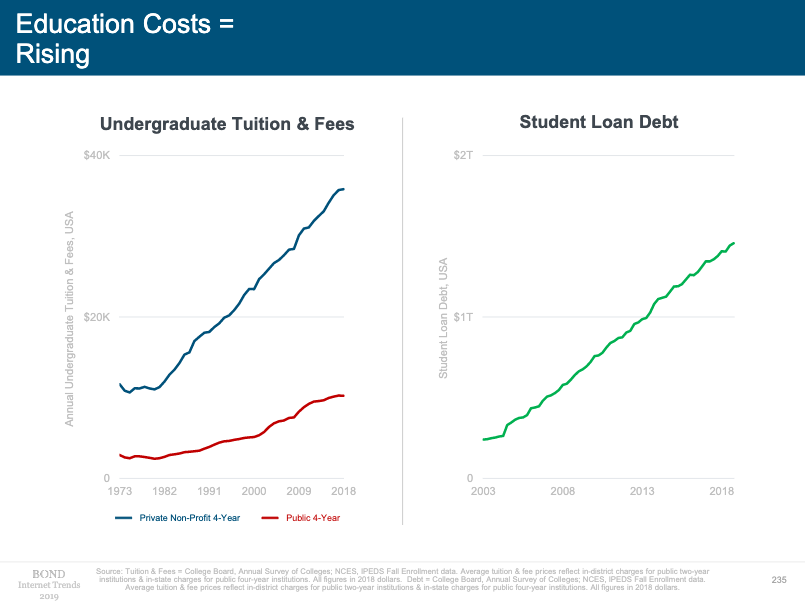
Because continuing your education after graduating from high school is getting more and more expensive, Meeker says “post-secondary education enrollment is slowing, and online education learning institutions are expanding their reach.” That reach is expanding as the skills needed to get a good, relevant job continues to change.
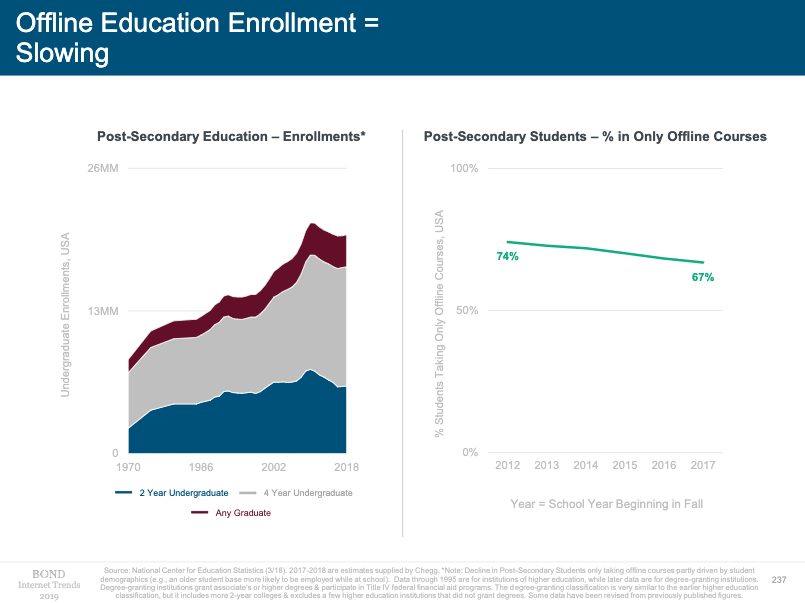
“People taking courses for job-relevant skills, and the number of companies paying for their employees [to take the courses] is growing,” she points out. Popular online learning tools include stand-alone classes, remote video chats with teachers and tutors, and virtual classrooms, and they are being accessed via computer platforms and downloadable videos.
Online learning platform Coursera is one of the many companies partnering with traditional universities to offer training for in-demand skills. Eighty percent of Coursera’s revenue comes from business tech and data science courses, and there are nearly 40 million registered learners across the entire platform. Among the most popular Coursera courses last year were “Machine Learning” from Stanford University, “Learning How to Learn” from the University of California San Diego, and “Algorithms” from Princeton University.
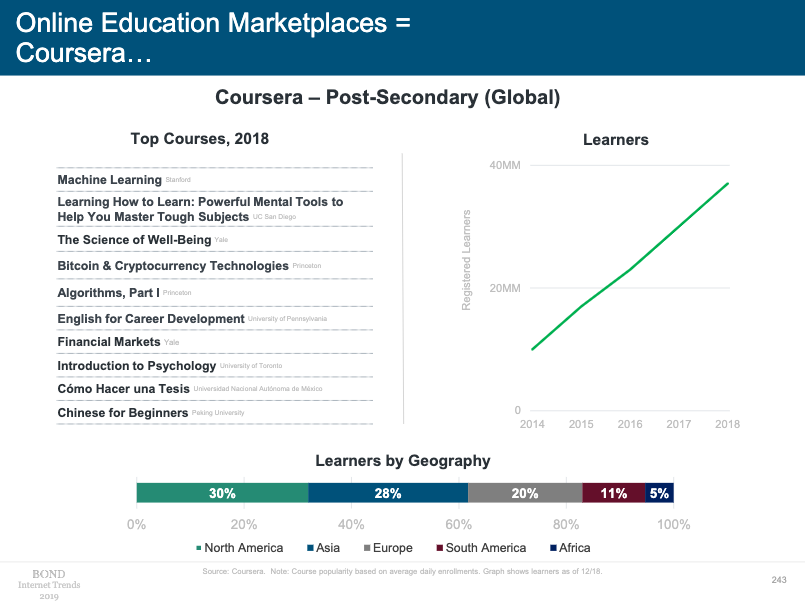
Other universities are getting on board with the online teaching approach, offering their classes directly to students without a middleman. “Top offline institutions are ramping their online offerings at a very rapid rate, including The University of Pennsylvania, University of London, and the University of Michigan,” says Meeker.
Changing Nature of Work
Meeker’s Code Conference presentation had many insights into American workforce trends, experiences, and concerns, or lack thereof.
Mary Meeker’s 2019 internet trends report | Code 2019
At Recode by Vox’s 2019 Code Conference, Bond partner Mary Meeker released her slides in rapid succession, covering everything on the internet’s latest trend…
Despite the feeling that they need to, and want to, learn new skills, Americans have a relatively low concern about being unemployed when compared to other countries. In a recent IPSOS/Reuters poll that Meeker cites in this year’s Internet Trends report, people around the world were asked: “Are unemployment and jobs among the top three concerns in your home country?”.
“Relative unemployment concerns are very high outside the U.S. and low in the U.S. and trending lower. Unemployment is at a 19-year low, job openings are an all-time high, and wages are rising,” are among the reasons she cites for the lower concern.
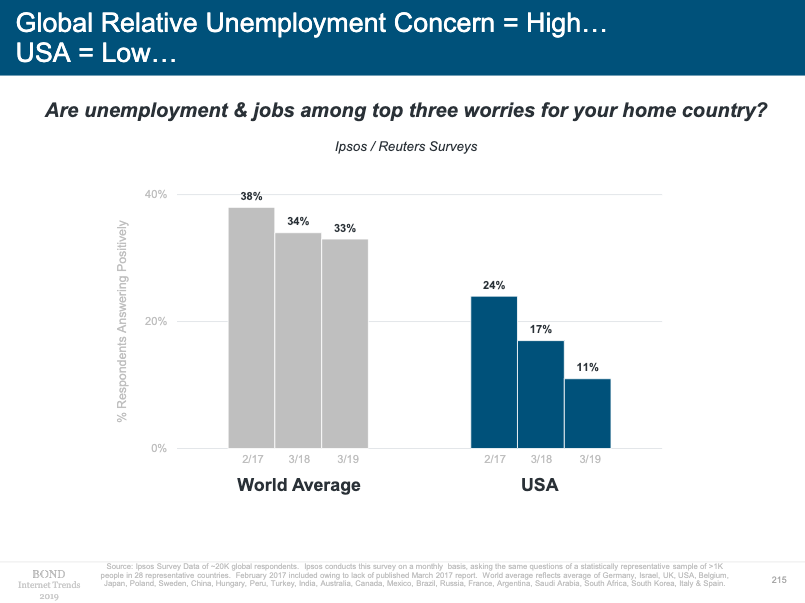
The headline numbers don’t paint a full picture of the jobs situation in the country. There are more than 5.9 million people out of work and looking for jobs, according to the most recent numbers from the Bureau of Labor Statistics, and an uncounted number of people who have given up entirely. Unemployment and underemployment are increasing the number of “on-demand”, or gig, workers and the number of on-demand businesses.
“People that are getting on-demand work were previously unemployed. [There are] seven million on-demand workers, up 22 percent, year over year,” Meeker points out. She adds that on-demand work is allowing entrepreneurs to create “internet-enabled opportunities and efficiencies.” There’s been amazing growth in payment processing companies, such as Square and Stripe, which allow small businesses to transact sales just about anywhere there is internet or cellular availability.
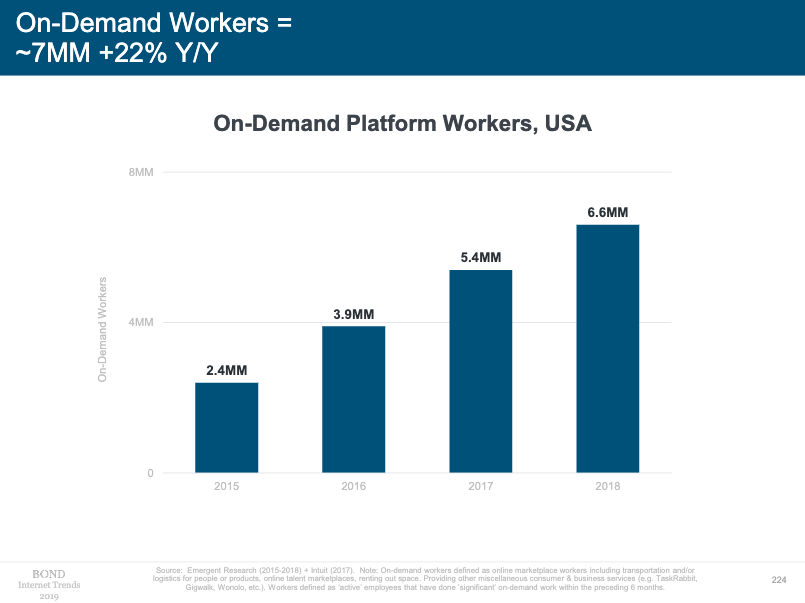
Other companies such as DoorDash have used the internet to build a food delivery service. According to her numbers, five percent of America’s restaurant industry’s $800 billion in sales is delivered. Another survey suggests that delivery sales are going to outpace in-restaurant sales within four years, thanks in part to the increase in delivery apps.
“We’re still in the very early innings of development of on-demand delivery and services, with a lot of opportunity to help local merchants,” she says. More sales mean more people are being hired to serve local business needs. “They want to learn new skills. They were underemployed. They want flexible work hours,” Meeker adds when sharing a recent poll from Wonolo, a marketplace that connects on-demand workers with employers.
Another internet-enabled growth area in the workforce is in the number of remote workers. “The percent of Americans that work remotely is at five percent, versus three percent in 2000,” according to Meeker’s report.
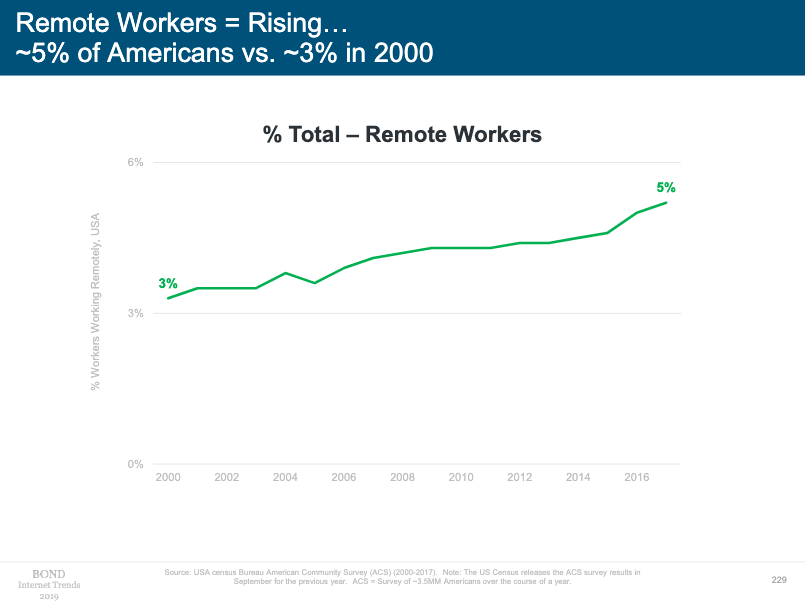
She singles out Zapier as one of the best examples of how the internet is changing the work environment. The company, a web-based service that consolidates all the apps a company uses into one system, has a completely remote workforce of more than 200 employees located in 14 countries.
“Co-founder and CEO Wade Foster says with well-connected tools and processes, any remote employee can feel more focused, productive, and in control of their time. And we believe that to be true benefits of remote work. Number one: flexible work hours, ability to travel, more time with family, and more time at home,” according to Meeker.
“Technology changes are evolving faster than human adaptability. If it feels like we’re all drinking from a data firehouse, it’s because we’re experiencing internet usage overload. Almost 26 percent of adults are almost constantly online, versus 21 percent three years ago,” she says. “With a little bit of a smile, we ask the question: “Are we moving to a new world with Zoom by day and Fortnight by night.”
You can watch Mary Meeker’s full presentation at the Code Conference 2019 here.
You may also like…
College Alternatives: The disruption in higher education is here
A guide to the emerging educational revolution for adult learners
Jane Oates: Talent shortage forcing ‘rethink’ of education system
ACT Panel: Sweeping educational changes needed for today’s workforce




